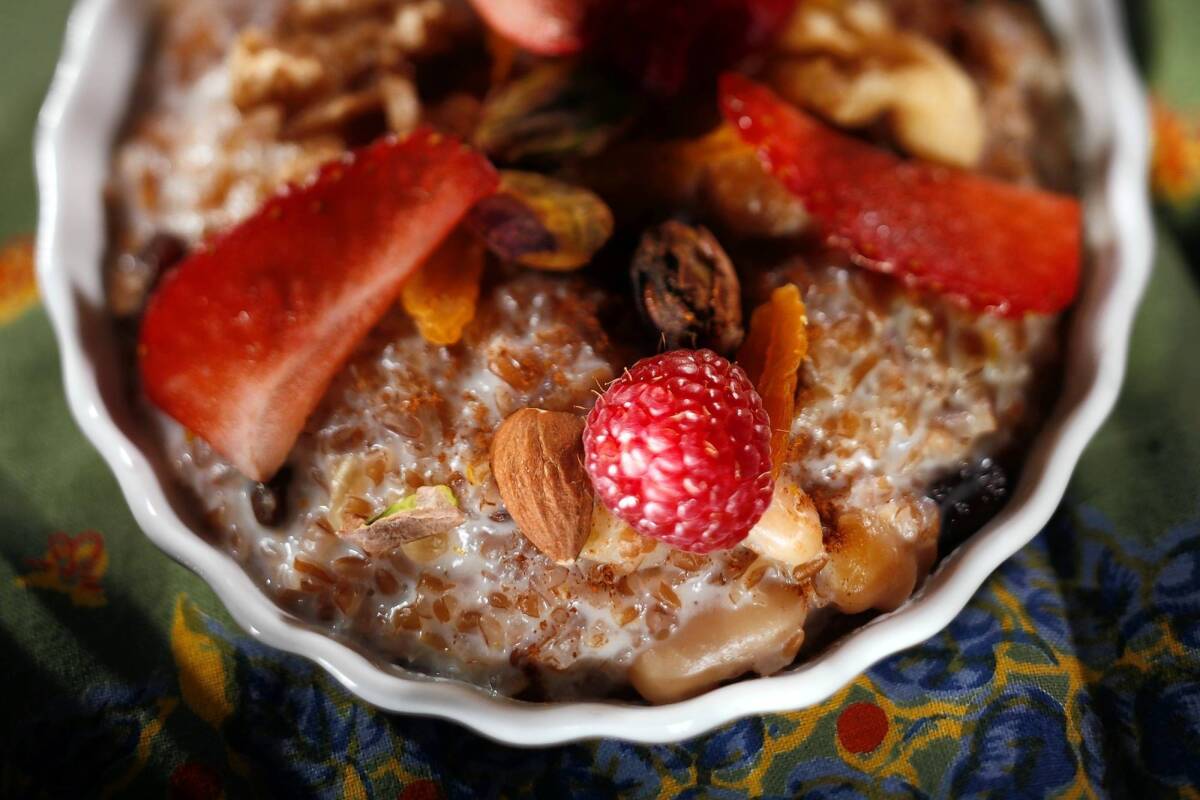Bulgur: An ancient convenience food

- Share via
When I lived in the Middle East, I learned that tender tabbouleh salad and crunchy fried kibbeh, the celebrated Levantine croquette, share a key ingredient: bulgur. Since ancient times, bulgur has been a staple in the Fertile Crescent, where it is popular today as pilaf and is used in a variety of other dishes, including stuffed vegetables, lentil entrees, meat stews and stuffings for poultry. In fact, the word “bulgur” comes from Turkish, and southeastern Turkey may be the area where wheat was first cultivated.
Bulgur could be considered one of the world’s first convenience foods. To be made into bulgur, wheat grains are parboiled, dried, ground and sifted to separate the pieces into different sizes. This process makes bulgur one of the quickest-cooking whole grains. In fact, bulgur does not need to be cooked at all. Soaking bulgur in water softens it enough to make it pleasant to eat, and this is the classic way to prepare it for salads such as tabbouleh and its spicy cousin kisir, flavored with red pepper paste and cumin.
I use bulgur as a substitute for longer-cooking grains to speed up the preparation of casseroles, soups and desserts. For example, in Noah’s pudding, a nut, fruit and honey dessert that has been a favorite of mine since I first tasted it in Istanbul pudding shops, I replace the customary whole wheat berries with bulgur.
You can find bulgur in well-stocked supermarkets and natural foods stores. Middle Eastern markets have more varieties, often labeled by numbers: Bulgur No. 1 is finely ground, No. 2 is medium or medium-fine, No. 3 is coarse or medium-coarse, and No. 4 is coarse or extra-coarse. (The package descriptions of different companies vary slightly.) In general, cooks prefer the smallest bulgur for making lamb tartar, fine or medium bulgur for tabbouleh-type salads and fried kibbeh and larger sizes for pilafs and soups.
Bulgur is different from cracked wheat, which is raw. I’ve seen packages labeled bulgur cracked wheat — as long as the word “bulgur” is there, you know it’s the quick-cooking kind.
American-milled bulgur is often made from white wheat and is tan and mild in flavor. Some Middle Eastern markets carry darker-hued brown bulgur, which is made from red wheat. According to Mike Orlando of Sunnyland Mills in Fresno, some people use this bulgur, which has a slightly bitter taste due to more tannins, in Lebanese dishes. At some Los Angeles markets, there’s also durum-wheat bulgur that comes from Turkey.
And new varieties of this oldest convenience food are still coming. Orlando told me that bulgur would soon be available made from freekeh (grilled young wheat), farro and Kamut.
Levy is the author of “Feast From the Mideast.” She will be giving a talk on “Anatolian Delights” on May 18 at the Anatolian Cultures & Food Festival.
More to Read
Eat your way across L.A.
Get our weekly Tasting Notes newsletter for reviews, news and more.
You may occasionally receive promotional content from the Los Angeles Times.





